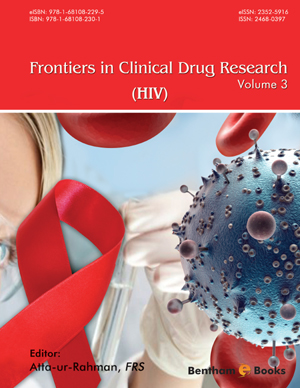Abstract
Despite being the first anti-viral described to be effective against HIV, reverse transcriptase inhibitors remain the cornerstone of highly active antiretroviral therapy (HAART). There are two broad classes of reverse transcriptase inhibitor, the nucleoside reverse transcriptase inhibitors (NRTIs) and nonnucleoside reverse transcriptase inhibitors (NNRTIs). In this part, we firstly introduce the approved reverse transcriptase inhibitors containing eight NRTIs (zidovudine, didanosine, zalcitabine, stavudine, lamivudine, abacavir, emtricitabine and tenofovir disoproxil fumarate) and five NNRTIs (nevirapine, efavirenz, delavirdine, etravirine and rilpivirine). As a dNTP analog, an NRTI is converted to a dNTP analog by a phosphorylation cascade performed by cellular kinases, and then RT catalytically incorporates the drug as an NRTI monophosphate at the 3'-end of the growing viral DNA primer. Upon incorporation, an NRTI inhibits the elongation of DNA primer because NRTIs lack a 3'-OH group that prevents addition of the next nucleotide. An NRTI-triphosphate does not block the activity of an RT molecule, however, certain RT mutations cause NRTI resistance by discriminating an NRTI-triphosphate from the analogous dNTP substrate. Unlike NRTIs that do not directly inhibit RT, an NNRTI drug binds to a hydrophobic pocket in the palm sub-domain adjacent to the base of the thumb sub-domain and allosterically inhibits DNA polymerization. The NNRTI pocket permits the design of highly specific inhibitors having low toxicities and minimal side effects. The NNRTI pocket is not required to be highly conserved for carrying out the enzymatic activity unlike the conserved active site or dNTP-binding site of RT. Therefore, HIV-1 has a relatively lower genetic barrier for developing NNRTIresistance mutations than for NRTI-resistance mutations. Primary NNRTI-resistance mutations appear in and around the NNRTI pocket, that is, most of the pocket residues can mutate to confer NNRTI resistance. Then we will focus on six new drugs which are currently in preclinical or approved for second-line therapy and describe the patterns of resistance associated with their applications as well as the underlying mechanisms that have been described. Newer RTIs have greater anti-viral activity and less toxic than older. Some reverse transcriptase inhibitors with a low genetic barrier are more commonly used due to affordability and availability in resource-limited settings. While their application results in the emergence of specific patterns of antiviral resistance, useful strategies and new compounds are necessary for patients in such settings.
Keywords: Antiviral activity, Drug-resistant, Nonnucleoside reverse transcriptase inhibitors (NNRTIs), Nucleoside reverse transcriptase (NRTIs), Reverse transcriptase inhibitors (RTIs), Toxicity.






















